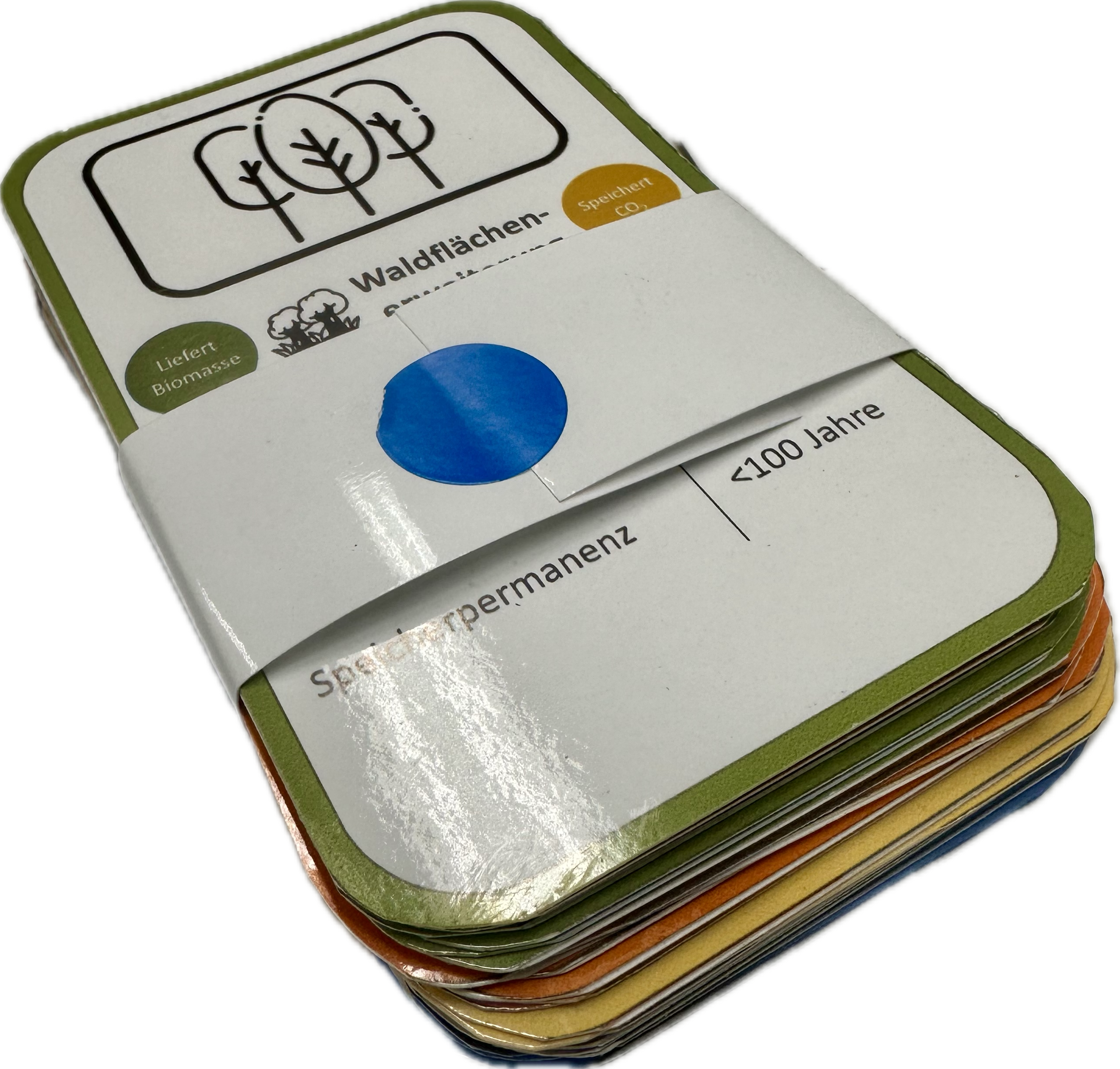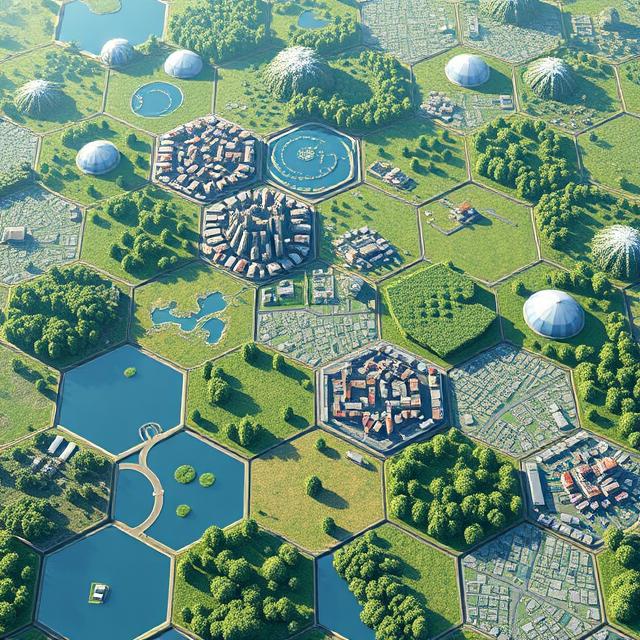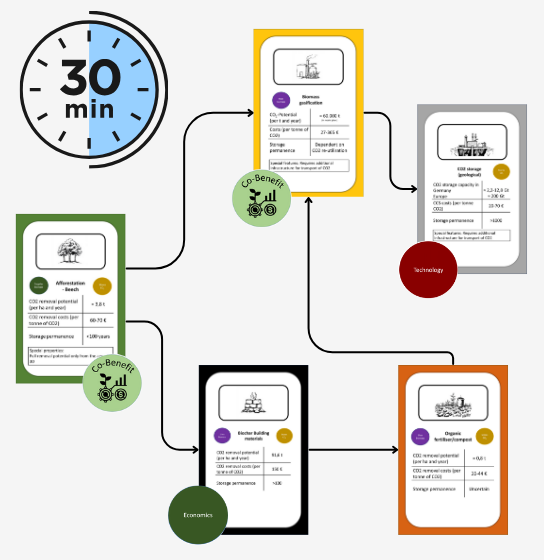Carbon Cascadia
A game where you’ll embark on a journey through various methods of carbon dioxide removal (CDR). Explore the intricate mechanisms of CO₂ removal, weigh trade-offs and synergies, and experiment with organizing methods and biomass flows in cascades.
A sneak preview of the different game options

Cards
This game is designed for people who are professionally involved with CDR and want to learn more about carbon dioxide removal cascades.

Online Cards
If you can't play the game in person with others, you can play it online instead. The online version works in the same way as the card game, so you should have some knowledge of the subject.

Video Game
This video game is being developed in collaboration with the Klett publishing group for use in schools. You will probably get to play it in class, but if you are not a student, feel free to play it anyway!
The Scenario

Climate change is already underway and emissions are still rising. Scientists, international consortia and climate activists see an urgent need complement emission reduction with CO2 removal procedures to avert the worst. Farmers, foresters, thermal power plant operators, biochar start-ups, CO2 storage operators and many others are working together to establish the most effective, cost-efficient, long-term and sustainable processes possible to remove CO2 from the air using plants and to bind it in the long term. Only if everyone works together can such biomass-based CDR measures also function as cascades, i.e. a series of extraction processes. The players cooperatively search for the best cascades.
How to play the Card Game
The purpose of the game is to learn more about cascades of biomass-based CDR measures (BioCDR). The aim of the game is to create the most efficient, long-term, cost-efficient and sustainable cascades possible, which may also have positive side effects, so-called co-benefits, such as energy production or the preservation of biodiversity.
Game Preparation


Building Cascades
The small groups create one or more cascades of cards and arrows. Next to one start card a corresponding card is placed. As the cascade progresses, several cards can be placed together that use biomass or CO2. To do this, the investment options must be taken into account, which are indicated by the circles next to the card name: provides biomass -> uses biomass -> stores CO2 The number of cards placed is not limited by the rules of the game. Nevertheless, the cascades should remain technically and socially plausible. Players can add additional markers as the cascade progresses. The first phase ends after 30 minutes
Building Cascades
The small groups create one or more cascades of cards and arrows. Next to one start card a corresponding card is placed. As the cascade progresses, several cards can be placed together that use biomass or CO2. To do this, the investment options must be taken into account, which are indicated by the circles next to the card name: provides biomass -> uses biomass -> stores CO2 The number of cards placed is not limited by the rules of the game. Nevertheless, the cascades should remain technically and socially plausible. Players can add additional markers as the cascade progresses. The first phase ends after 30 minutes

Evaluation
To discuss the cascades, all players from the small groups come together in plenary. The cascades are explained in turn. Questions of understanding are clarified.
You can evaluate the cascades asking yourself questions about:
Storage Volume
Durability of storage
Costs
Number of additional benefits
Environmental compatibility
Regionality of the cascade

